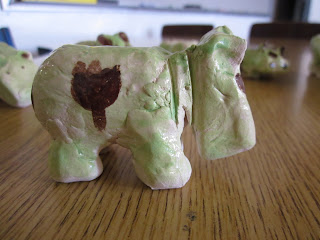NOTE: The lesson explained below occurred before the artwork posted above was made.
The artwork above was made by Henri Matisse in 1946 and is titled, "Polynesia, The Sea". Before I took my students outside to work with sidewalk chalk, we discussed the elements of art found within this piece. Shape and value seemed to dominate the conversation, while visual texture was definitely included as my students imagined feeling all the different plants and critters from the sea found within the picture. Students chose two or three shapes to focus on while replicating them outside with sidewalk chalk.
It didn't take long to begin filling our sidewalk squares.
Big clouds were forming, and students knew that their hard work would soon be washed away.
We talked about temporary art and the importance of finding enjoyment in the process.
Tomorrow we will have a brand new canvas to cover!















